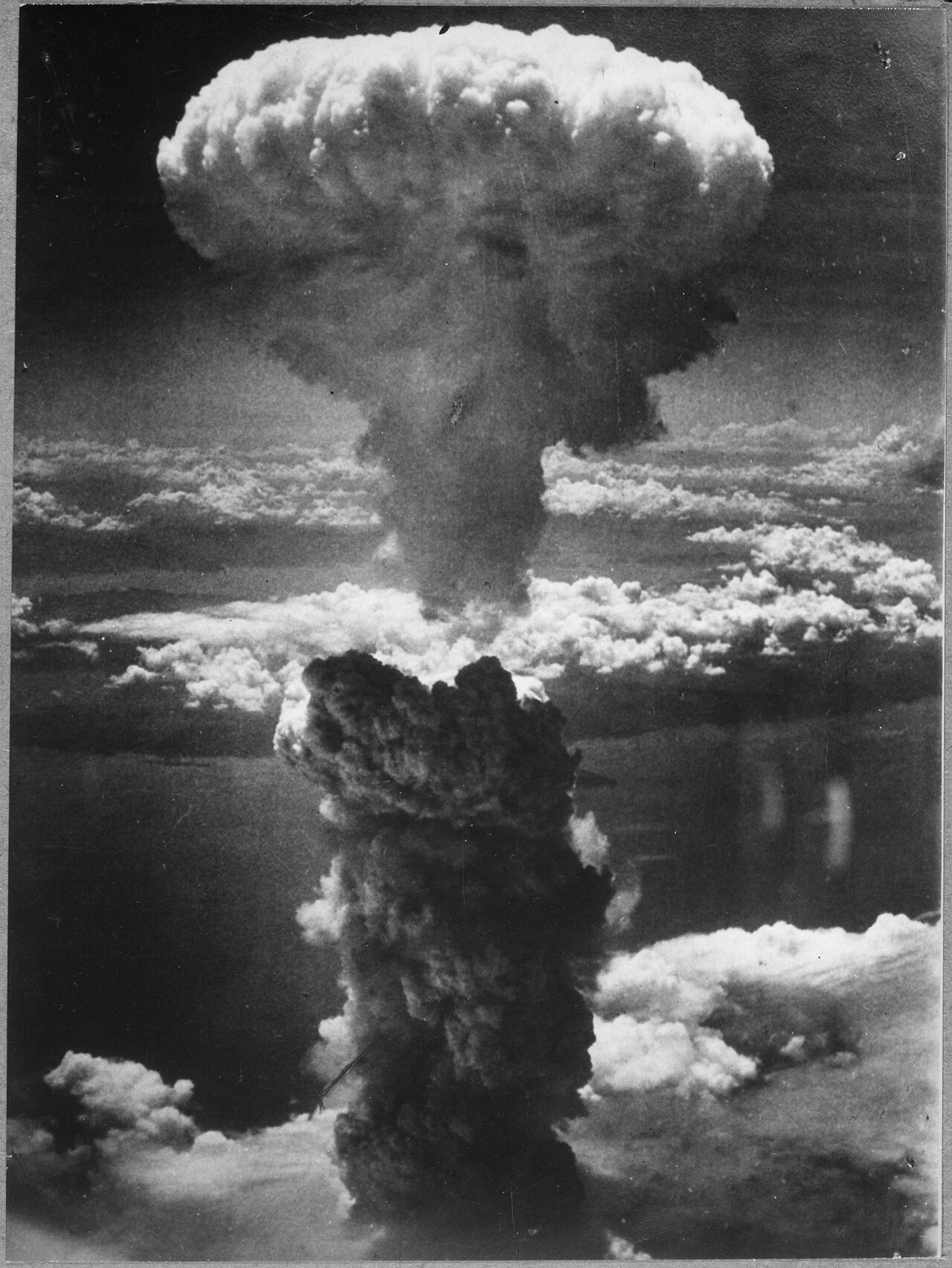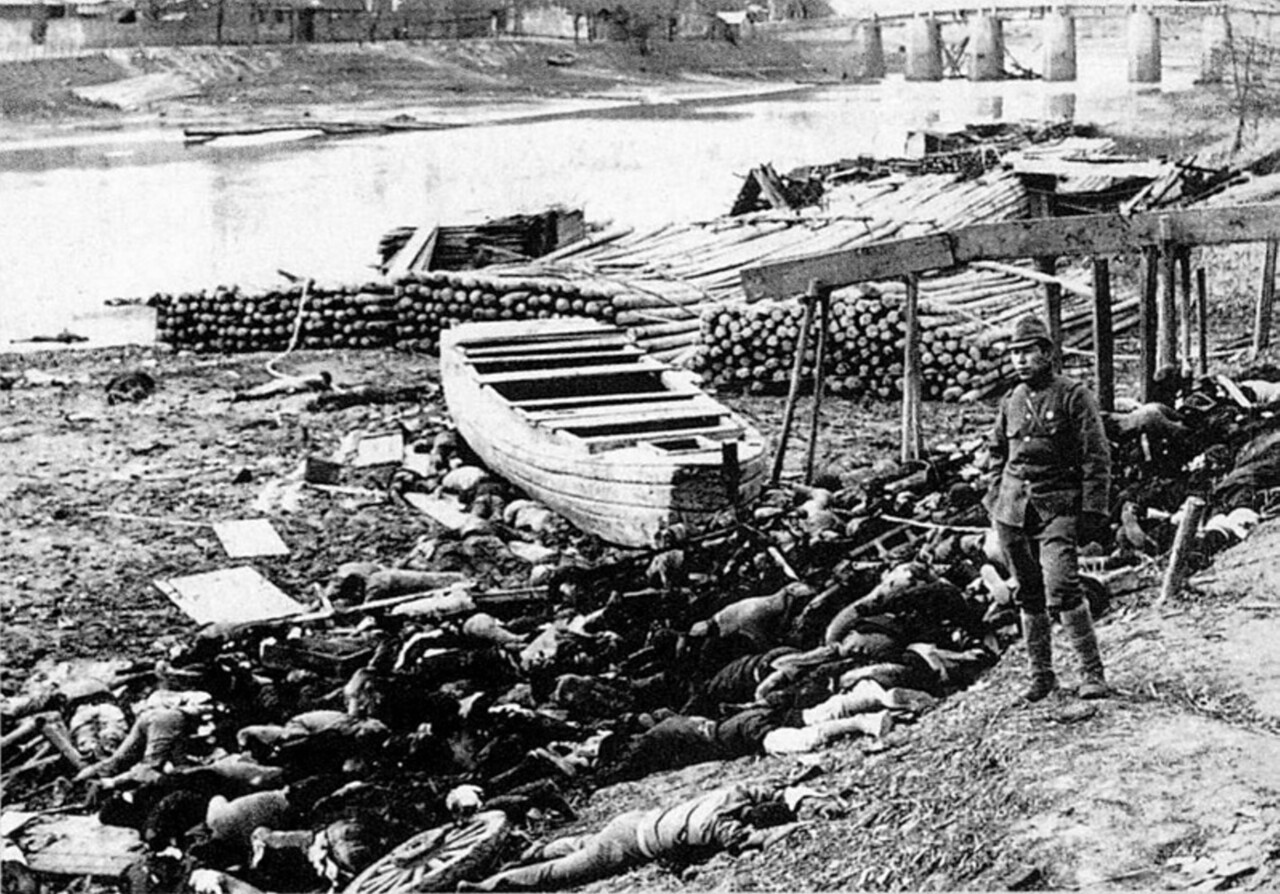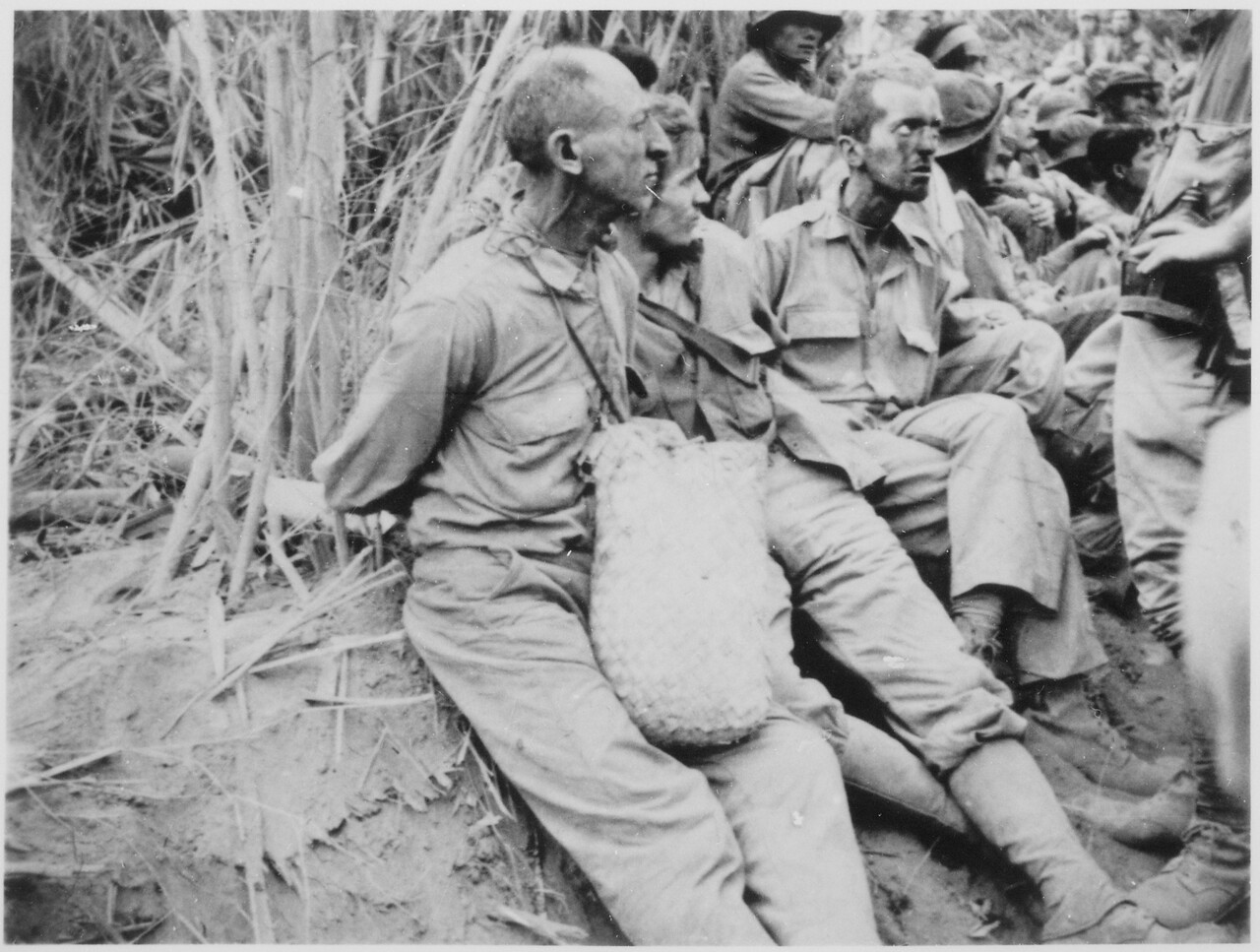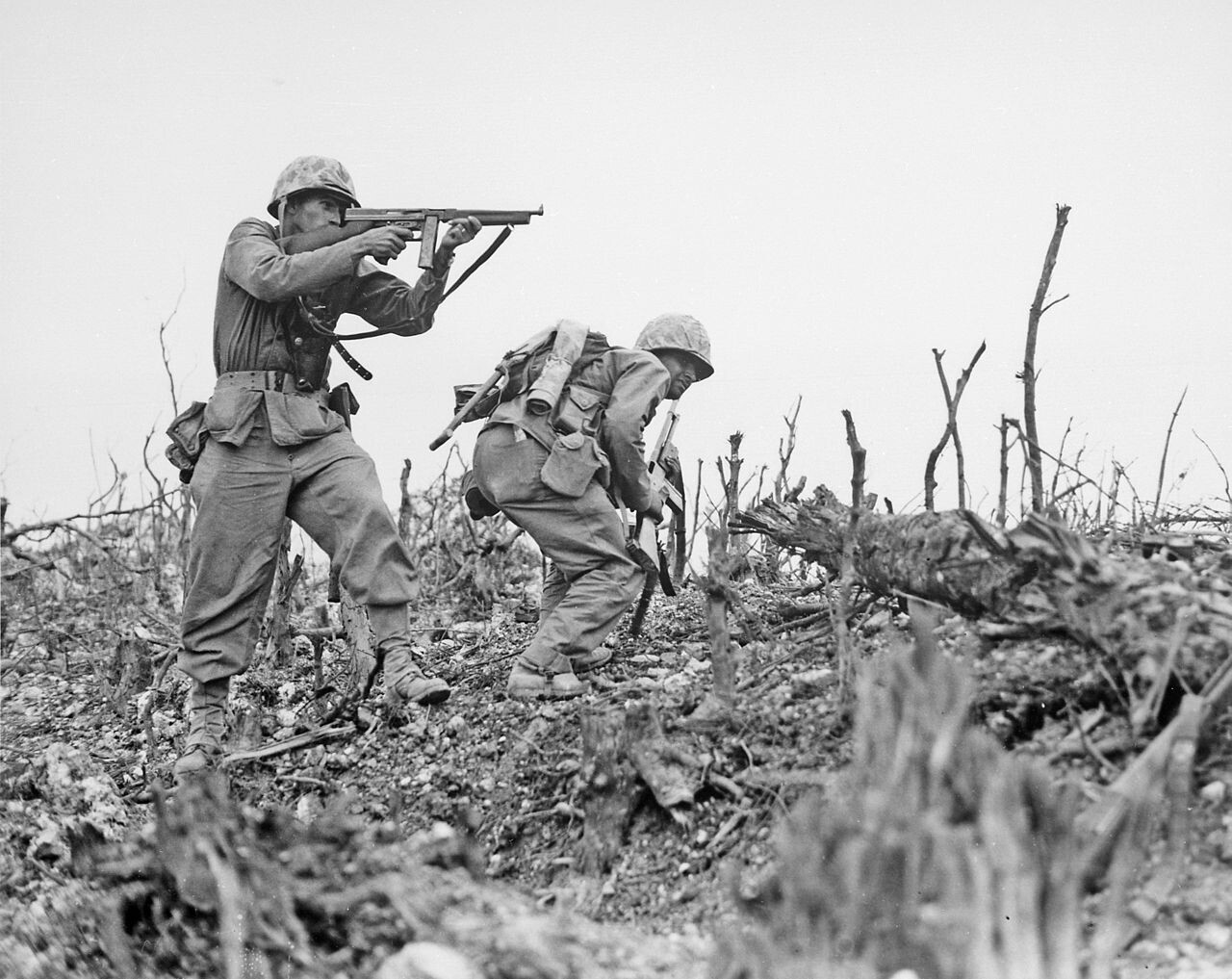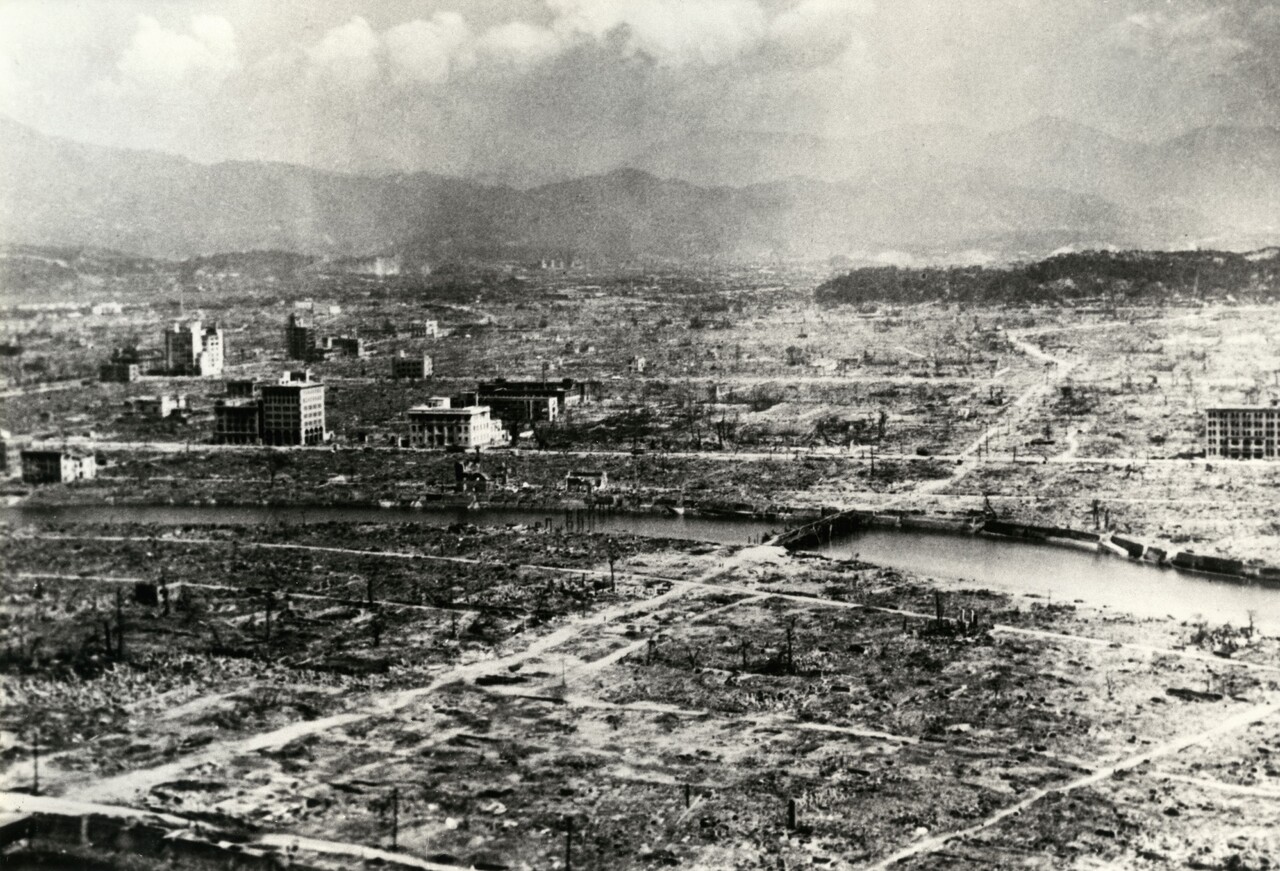The War in the Pacific
From the end of the 19th century, the Japanese Empire pursued an increasingly aggressive policy of expansion: Korea and parts of China were colonised. In 1937, Japan launched a war against China and invaded its neighbour. In December of that year, Japanese soldiers massacred over 200,000 civilians and prisoners of war in Nanking alone, and tens of thousands of women and girls were raped. On 7 December 1941, Japan attacked the US Pacific Fleet at Pearl Harbor, Hawaii. With its ally Germany declaring war on the US, the war in Europe escalated into a world war. From 1942, the Americans and their allies fought fierce battles to push the Japanese back, island by island. In March 1945, more than 100,000 people in Tokyo were killed in an air raid by American bombers – probably the highest number of casualties ever in an air raid. After the atomic bombings of Hiroshima and Nagasaki and the entry of the Soviet Union into the war against Japan in the summer of 1945, Emperor Hirohito (1901 – 1989) ordered an end to the fighting in a radio address broadcast on 15 August. The signing of the Japanese surrender document on the USS »Missouri« on 2 September 1945 marked the end of the Second World War. Between 1941 and 1945, 26 million soldiers and civilians lost their lives in the Pacific war.
Nagasaki, 9 August 1945: The atomic bomb »Fat Man« is dropped from a Boeing B-29 Superfortress. The mushroom cloud rose 18 kilometres high. Tens of thousands of civilians and forced labourers were killed instantly or die from the resulting damage.
National Archives and Records Administration, Washington, D. C., 535795
Philippines, May 1942: After the attack on Pearl Harbor, the Japanese army conquers the country, then a semi-autonomous colony of the USA. Around 16,000 American and Filipino prisoners of war died on the »Bataan Death March«, which is considered one of Japan's most notorious war crimes.
National Archives and Records Administration, Washington, D. C., 532548
USS »Missouri«, 2 September 1945: Japan's Foreign Minister Shigemitsu Mamoru (1887 – 1957) signing the surrender document. Japan was now occupied. In 1951, however, the country signed a peace treaty and became a key ally of the United States during the Cold War. However, Japan has largely failed to re-examine its own past.
Naval Historical Centre, Washington, D. C., SC 213700
